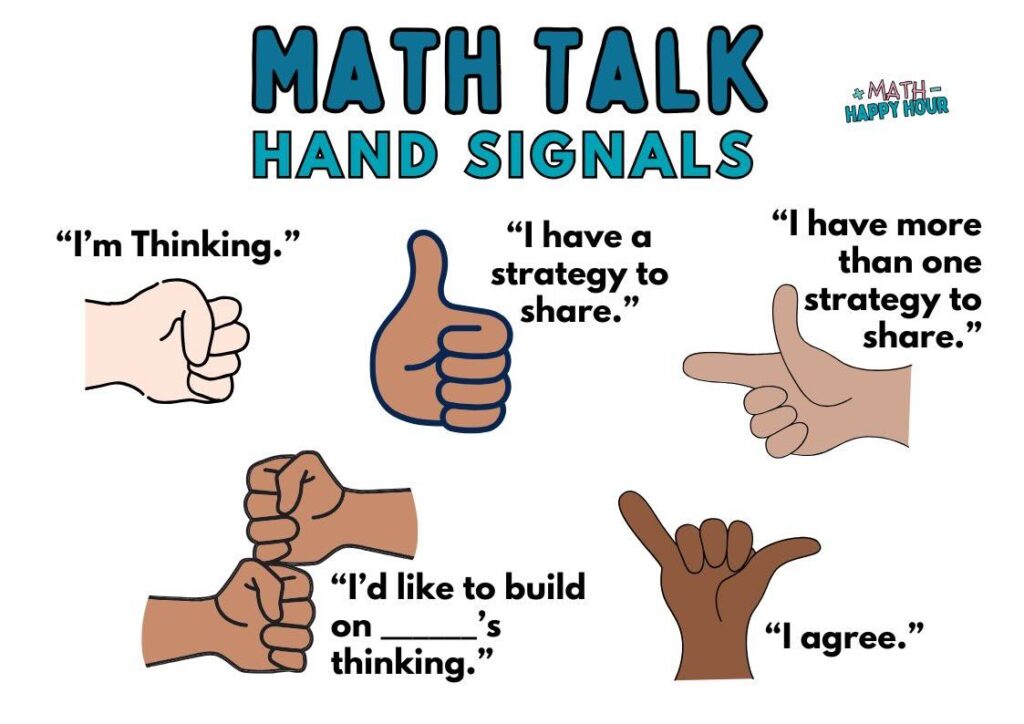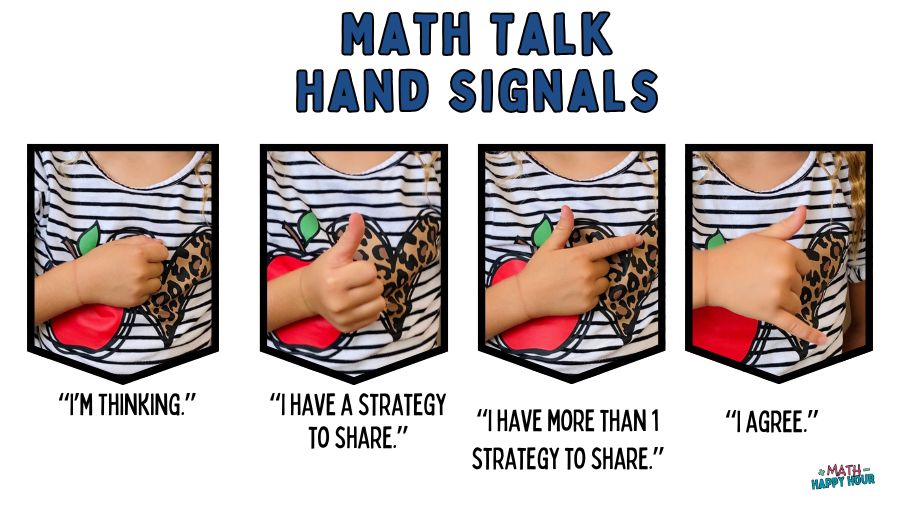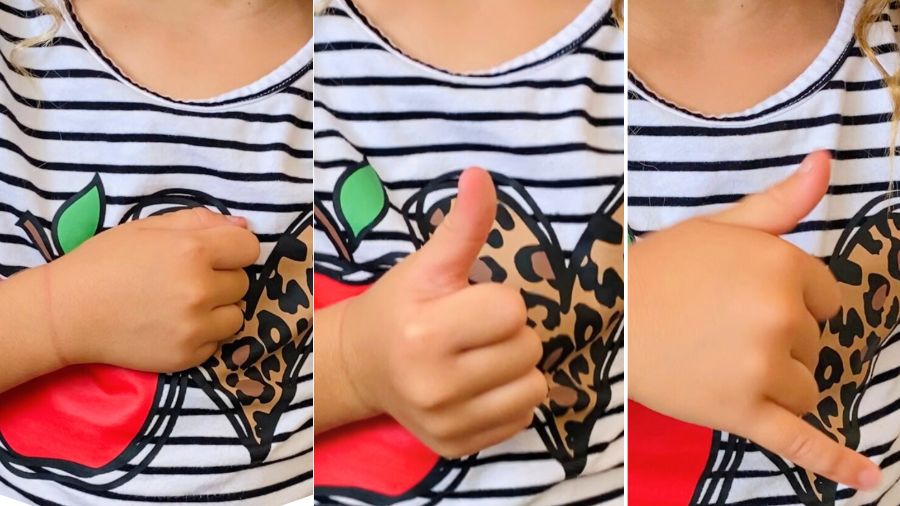Browse around
topics
Hey Friend!
Elementary Teachers who love talking about math.
We're Tiana & Whitney
Teaching math was not our favorite. We taught math traditionally with memorized steps and timed tests because we didn't know math could be fun. Read our story
The Power of Think-Time During Math Talks
Math Talks
Enhancing Math Conversations: Using Talk Posters Effectively
Math Talks
Build Multiplication Fluency with Visual Arrays
Fluency + Fun
Celebrating the Brilliance of Every Student in Math
Teacher Toolbox
Let's get Social!
Follow us on Instagram for the latest math tools and strategies!
Looking for an easy but effective way to assess students’ understanding during math talks? Math hand signals can be a powerful math assessment tool, offering teachers a clear way to gauge where students are in the thinking process.
Using Hand Signals During Math Talks
Hand signals are a game changer for math talks, like number talks or number strings. They give students a simple way to communicate without interrupting or disrupting the flow of discussion. Unlike raising a hand, which could mean anything from “I have the answer” to “I have a question,” hand signals are more specific and purposeful. This allows you to know exactly what each student needs or is thinking.
Advantages of Math Hand Signals
- Clear Communication: Hand signals help students express where they are in their thinking without stopping the conversation.
- Keeps Students Engaged: Raising a hand often signals the end of thinking. However, with hand signals, students stay actively involved in problem-solving.
- Minimizes Distractions: Signals are kept low in front of students, so they can communicate with you without drawing attention away from the speaker.

Common Math Hand Signals to Use
Here are some useful math hand signals that you can easily teach your students to use during math talks:
- Fist: “I’m still thinking.”
- Thumbs Up: “I have one strategy to share.”
- Multiple Fingers Up: “I’ve got more than one strategy.”
- Hang Loose: “I agree with the idea being shared.”
- Stacked Fists: “I’d like to build on ____’s thinking.”
Incorporating these math hand signals into your math talks creates a more inclusive and interactive environment where every student can participate, regardless of whether they’ve solved the problem yet.
@mathhappyhour During math talks I have my students give hand signals to communicate with me. I regularly use 5 signals, but at the beginning of the year, I start with these 4 signals (low and in front of their chest). ✊ “I’m thinking.” 👍 “I have a strategy.” ✌️ “I have more than 1 strategy.” 🤙 “I agree.”
♬ original sound – MathHappyHour
Example: Subtraction Number String
Imagine you’re doing a subtraction number string. You write the expression on the board and give students think time to solve it mentally. If you’re not sure how much think time to give students, check out this post on think time during math talks.
Here’s what different hand signals might show you:
- Thumbs Up: This student has solved the problem and feels confident in their subtraction fluency.
- Counting on Fingers: This student is still working through it, likely needing more fluency practice.
- Looking Down: This could indicate confusion or disengagement, signaling a need for more support or scaffolding.
- Multiple Fingers: This shows flexibility in thinking—this student can solve the problem in more than one way and is ready for a challenge.
While these signals aren’t a perfect measure, they provide a quick glimpse into students’ understanding. Over time, you’ll get better at reading where each student stands based on their signals.
Hand Signals as an Assessment Tool
Math hand signals are especially helpful for identifying students who may rely too heavily on memorized steps and struggle with flexible thinking. If a student regularly signals that they’re stuck or counting on their fingers, it could be a sign they need more opportunities to build number sense and conceptual understanding.
By regularly using hand signals as a math assessment tool, you can quickly gauge which students need more support and who’s ready to move forward.

Other Ways to Assess During Math Talks
While hand signals are an excellent way to assess understanding during math talks, there are other ways to gather insights about student thinking:
- Listening to Peer Sharing: As students share strategies with one another, listen closely. The way they explain their thinking can tell you a lot about their grasp of the concept and whether they need more hands-on practice.
- Explaining Their Thinking: When students explain how they arrived at a solution, you gain valuable insights into whether they solved the problem efficiently and correctly—or if they struggled along the way.
Conclusion
Hand signals may seem simple, but they can become one of your favorite math assessment tools. Combined with active listening during math talks, these signals help you understand your students’ thinking in real-time. The more you incorporate them into your routine, the better you’ll become at quickly assessing where each student stands—without needing to stop the flow of learning. Keep an eye on those hands, and let them guide your next steps!
Pin
Share
Leave a Reply Cancel reply
Previous Story
next Story
© 2025 Math Happy Hour. Site by Sugar Studios
Heard about Math Talks but unsure where to begin? 🤷♀️ Don't stress!
5 Steps to Get Started with Math Talks
Join us on Insta
We're so glad you're here, stick around and let's talk about math! xo Whitney & Tiana
